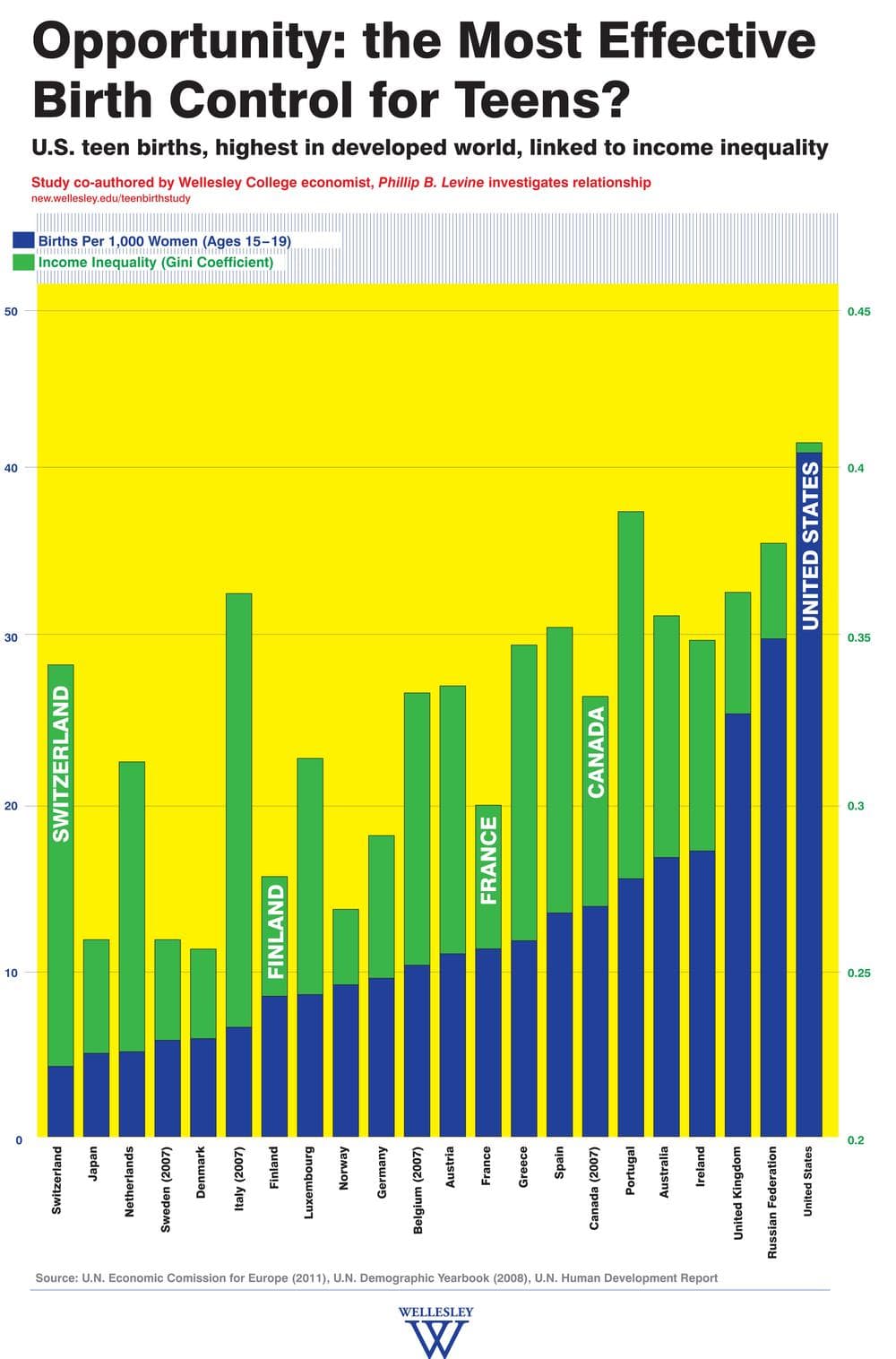Advertisement
Wellesley Economist Finds Income Inequality Drives Teen Birth Rate
The term “income inequality” and the idea of the 99 percent versus the 1 percent became part of the vernacular almost overnight following the explosion of the Occupy movement last year. But for the first time, researchers say they have now found a connection between income inequality and the teen birth rate. Despite declining in recent years, the U.S. still has the highest rate among developed countries.

WBUR’s Morning Edition host Bob Oakes sat down with Wellesley College economist Phillip Levine to talk about his new research, to be published in the May 22 edition of the Journal of Economic Perspectives.
Levine said he and his fellow researcher, University of Maryland economist Melissa Kearney, set out to solve the mystery of the tremendous variation in teen birth rates across geographic locations. They zeroed in on one variable between those locations: the gap between the middle class and the poor — in other words, income inequality at the bottom end. And while other research has shown that poor teens are considerably more likely to give birth than those whose families are at middle- and high-income levels, Levine said the issue goes much deeper.
“What really seems to exacerbate the problem is when you’re poor and you live in a place where there’s a great degree of income inequality,” Levine explained. “So if you’re poor in a high inequality location, then you’re really much more likely to give birth as a teenager.”
It’s about economic opportunity, according to Levine. Much of the previous research into the sociology and ethnography of teen birth has focused on things like despair and hopelessness, he said.
In a place of great income inequality, Levine said, “if you’re at the bottom of the distribution and it’s very difficult to move up from that position in the distribution, that may lead to the hopelessness and the despair...”
This explains the difference in teen birth rates between U.S. states and between different countries, according to Levine, who calls that variation between countries very large.
“The U.S. is a huge outlier, even after the decline that we’ve experienced,” Levine said, referring to the 44 percent decline in the U.S. teen birth rate over the last two decades. He said his research found that the difference in income inequality between the U.S. and other countries can explain upwards of half of the difference in teen childbearing rates.
Advertisement
Massachusetts presents an interesting challenge to the researchers, however. Despite wide income inequality, the state has the third-lowest teen birth rate in the country, at 19.6 per 1,000 births among females 15-19 years old. Levine speculates overall education may play a role.
“It’s a plausible story that perhaps our education system is better, so that the opportunity that those at the bottom experience may feel greater even though we have a high degree of income inequality,” he said.
New Hampshire and Vermont have the lowest teen birth rates in the nation, and also have low income inequality. The highest rates of teen births are in Mississippi (64.2 per 1,000 births), New Mexico (63.9 per 1,000 births) and Texas (60.7 per 1,000 births).
As for programs long advocated to reduce teen pregnancies, such as abstinence education, sex education, contraceptive access and welfare reform, Levine said research shows they have had very little impact on teen childbearing. The problem, he said, is that those programs focus on behaviors that happen right before the pregnancy. He said the policy focus should shift to helping move girls off of a track where they feel a lack of opportunity, through investments in programs like early childhood education and schooling in general.
“What we would hope is that it would lead women to see, as they move through their teenage years, that there is reason to continue on in school and to work hard and to play by the rules, and not having a teen birth would be a result of that,” Levine said. Asked whether teen pregnancy should be viewed as an economic priority as opposed to a political football, Levine says yes.
“In some sense, both sides of the political spectrum, from our perspective, are arguing about solutions that it really doesn’t matter which ones get adopted,” he said. “They’re probably not going to get the job done. We think that the starting point of the political discourse needs to be moved... to much earlier in life.”
-- You can read the complete study, below:
http://www.scribd.com/doc/93928636/Teen-Birth-Study
This program aired on May 21, 2012.